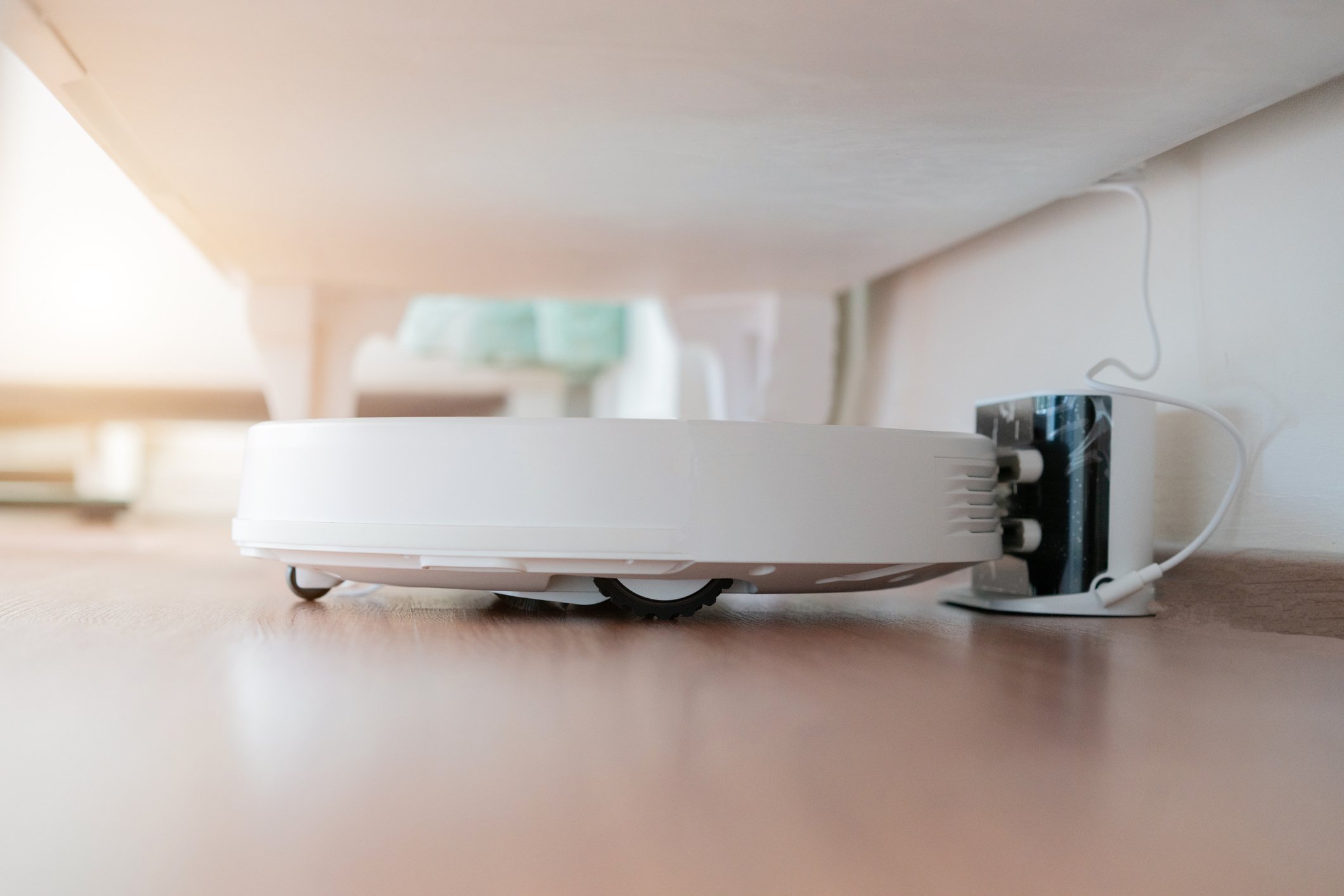Investors in iRobot (IRBT +2.50%) have had a roller coaster of a ride. The company's stock price soared 85% in 2013 but has taken a zigzag path to end up down 6% year to date in 2014.
As with all companies, iRobot's income statement gets the lion's share of attention from investors. But given that legendary investor Warren Buffett places huge importance on the balance sheet, the rest of us would be wise to pay more heed to this overlooked financial statement. So, we'll put our Buffett hat on and conduct a basic balance sheet analysis of iRobot to see if it adds any insight or supports the bull or bear case for the robot maker.
First, some folks might benefit from a primer.

iRobot's flagship product: Roomba. Source: iRobot.
Balance sheet 101
A balance sheet tells us what a company owns (assets) and owes (liabilities). An analysis will give us insight into the company's short- and long-term financial strength, as well as how efficient management is at using its assets to generate value for the company's shareholders.
The balance sheet is divided into two sections that balance each other:
Assets = Liabilities + Shareholders' Equity (or Stockholders' Equity)
Shareholders in a company want to see their equity -- or ownership -- increase, so a better way to think of this equation is:
Shareholders' Equity = Assets - Liabilities
A quick thing that you should do when considering investing in a company is to scan its balance sheet to see if shareholders' equity is increasing from quarter to quarter. The balance sheet doesn't get an automatic pass if that is happening. However, it's a red flag if it's not, and you'll know the balance sheet needs to be scrutinized.
Analysis of iRobot
Here's what iRobot's shareholders' equity has looked like for the last four quarters:
|
Period Ending |
June 28, 2014 |
March 29, 2014 |
Dec. 28, 2013 |
Sept. 28, 2013 |
|---|---|---|---|---|
|
Total Stockholder Equity |
359,283 |
346,817 |
330,689 |
322,602 |
Source: Yahoo! Finance; data in thousands.
It's increasing, as you'll find for most companies. We still need to conduct our analysis, but at least we don't have this red flag waving in our faces.
We're going to look at three measurements:
- Capital structure: a measure of long-term financial strength
- Working capital adequacy: a measure of short-term financial strength
- Asset performance: a measure of management efficiency
It's best to compare a company's balance sheet to those of similar companies in its industry, because financial metrics and ratios derived from them are highly contextual. Unfortunately, iRobot doesn't have any good comparables. Consumer cleaning robots account for about 90% of its revenue, while defense and security robots contribute most of the remaining sales. No other public company has a similar business profile.
Capital structure: Strong -- no debt
Capitalization refers to the composition of a company's long-term capital, or mix of debt and equity. We can find the total equity in the shareholders' equity column on a balance sheet. Two financial ratios used to show a company's capital structure are:
- Long-term debt/equity
- Debt/equity
We know from above that iRobot had $359 million in shareholders' equity for the most recent quarter. iRobot has no debt, so:
- Long-term debt/equity = 0
- Debt/equity = 0
Having no debt is a huge positive, as a company with a heavy debt load could run into trouble paying the interest on that debt during tough times.
Working capital adequacy: Passes with flying colors
Does iRobot have enough assets that can be converted quickly to cash in order to pay its operational liabilities -- or bills -- as they arise in the course of doing business? Three liquidity ratios are used to gauge working capital adequacy:
- Current Ratio = Current Assets/Current Liabilities
- Quick Ratio = Current Assets – Inventory/Current Liabilities
- Cash Ratio = Cash/Current Liabilities
"Current" is defined as one year, so current assets can be converted to cash within a year and current liabilities are due within a year.
While the current ratio is the most widely used measure, it's a good idea to look at one of the more conservative ratios, too. A current ratio might look OK, but it might not be adequate if it contains a large amount of inventory. If a company needs to quickly sell inventory in order to pay its bills, it's likely not going to get book value for those goods.
iRobot's ratios:
- Current ratio = 4.1
- Quick ratio = 3.5
- Cash ratio = 1.9
These are strong ratios, so iRobot is well positioned to meet its short-term liabilities.
What's an adequate ratio? A current ratio of between 1.2 and 2 is usually considered OK. However, a lot depends upon a company's free cash flow. If a company has a dependable flow of cash coming in, it won't need as high a current ratio as a company with choppy cash flow.
Asset performance: Looks OK, but bears watching
Various "activity ratios" are used to gauge how well management is using a company's assets to generate value for shareholders. We'll just cover one: the cash conversion cycle. The CCC shows how long it takes in days for a company to go from cash to cash. Here's the equation:
CCC = Days Inventory Outstanding (DIO) + Days Sales Outstanding (DSO) - Days Payable Outstanding (DPO)
The CCC also provides insight into whether a company's working capital is adequate. The shorter the CCC, the better.
Data by YCharts..
iRobot's CCC was trending favorably from about 2008 through 2012, but has recently been moving in the wrong direction. However, on a big-picture basis, it's still better than its historical average. I looked at each of the three components of the CCC, and it's clear that the CCC's uptick is due to an increase in the DIO. This indicates iRobot's money is being tied up longer in inventory these days. However, I don't think investors currently need to be concerned. This uptick is likely at least partially due to the fact that iRobot has introduced several new products recently, including new iterations of existing products and its telepresence bots.
iRobot has no good comparables. But I took a gander at the CCCs of home appliance specialist Electrolux, which should provide a decent comparison for iRobot's cleaning bot business, and Lockheed Martin, which is often considered a peer on the defense and security side. Electrolux's CCC has steadily fallen from about 45 to 31 over the last few years, while Lockheed's CCC has generally ranged in the low 50s to low 60s. iRobot's CCC looks fine compared to those of these companies.
While this isn't an exhaustive analysis, iRobot looks great from a basic balance sheet perspective. This is surely one reason that many investors believe iRobot deserves a premium valuation.
Stay tuned for a cash flow analysis!






